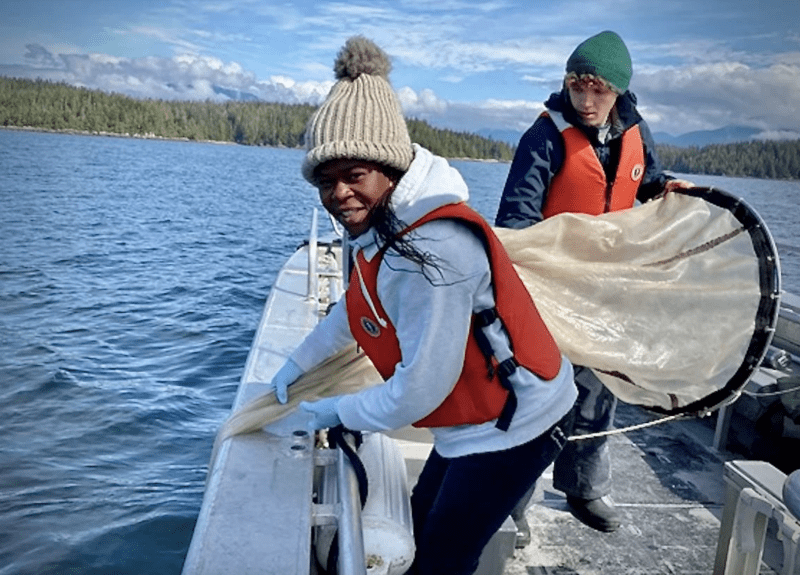Why washing machines are endangering tiny ocean creatures
People can make a big impact by simply making changes to how they do laundry – study
Rochelle Baker,
Local Journalism Initiative
Microscopic creatures vastly important to marine life are gobbling up harmful plastic fibres, which pose a serious risk to ocean health on the West Coast.
A type of zooplankton important for fish on B.C.’s southern coast are lining their guts with synthetic microfibres shed and flushed out to sea when we wash our clothes, said scientist Oladimeji Ayo Iwalaye.
Tiny shrimp-like creatures called Cyphocaris challengeri — a key food for herring, juvenile salmon and rockfish — are eating the microplastic fibres less than five millimetres in length instead of natural food like plankton, a recent lab study led by Iwalaye found.
“It spells trouble for the zooplankton,” said Iwalaye, a researcher with the University of British Columbia and the Ocean Wise Plastics Lab.
During the experiment, zooplankton were exposed to different concentrations of microfibres over various time periods to determine if they would consume the plastic filaments and measure any resulting outcomes. They were also provided with natural food to eat.
It’s clear the marine creatures can’t distinguish between the microfibres and their natural prey, Iwalaye said.
Even after being allowed to purify in clean water, zooplankton still retained some microplastics in their system, she added.
As a result, the marine creatures are likely deceived into thinking they’ve eaten enough food.
“However, they’re eating junk because the microfibres have no nutrition,” she said.
“They can become malnourished and then transfer less nutrients to their predators.”
Not only do the zooplankton likely suffer from empty calories, the junk food effect continues as microplastics accumulate up the food chain, she added.
Fish that consume microfibres in zooplankton can pass them on to bigger fish, seals, seabirds and humans. Large filter feeders, like blue whales, may be ingesting a billion microplastics — as much as four tonnes — over three to four months.
The creatures don’t only export the microfibres to other animals, but to other areas of the ocean as well, Iwalaye said.
The tiny marine creatures undertake a daily migration. They travel to the ocean surface each night to feed before travelling back to darker depths during the day to evade predators.
In doing so, zooplankton consume the plastics concentrated at the surface and then transport them into deeper water where they poop some out.
Typically, zooplankton’s natural “fecal pellets” — also dubbed marine snow — journey to the ocean floor where they provide valuable food for other marine life or fertilize ocean sediments.
But the microfibres make zooplankton poop heavier packets, causing them to fall more quickly. This accelerates the amount of microplastics collecting in the deep sea and likely consumed by bottom-dwelling sea life like crabs, sea stars, worms or sea cucumbers, Iwalaye said.
Higher concentrations of microfibres in the water impacted zooplankton more than the amount of time they were exposed to the pollutants.
This poses a concern given that microplastics, found everywhere from the deep sea to the Arctic, are only expected to increase over time, Iwalaye said.
It’s important to try to stop plastic pollutants at the source, Iwalaye stressed.
Designing washing machines that do a better job of trapping microfibres so they can’t escape into wastewater and the ocean is a possible solution, Iwalaye said.
But people can make a big impact by simply making changes to how they do laundry, she said.
“An Ocean Wise study proved that if we wash our clothes on the gentle and cold settings, we can actually reduce 70 per cent of microfibre shedding.”
This story was originally published by Canada’s National Observer.
Researcher Oladimeji Ayo Iwalaye, front, collecting marine life for microplastics research.
Image Credit: SUBMITTED

